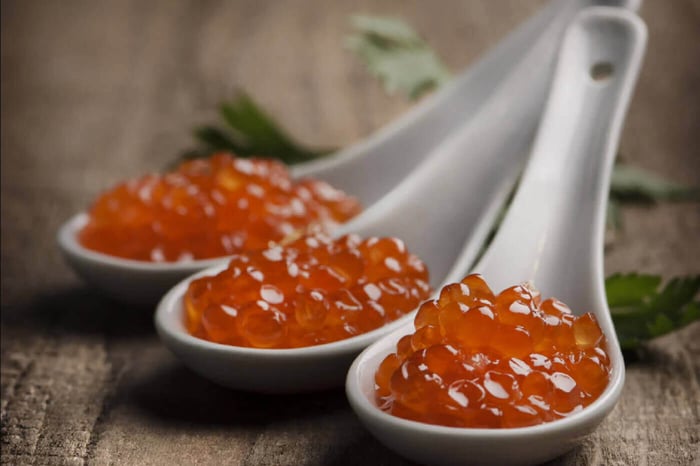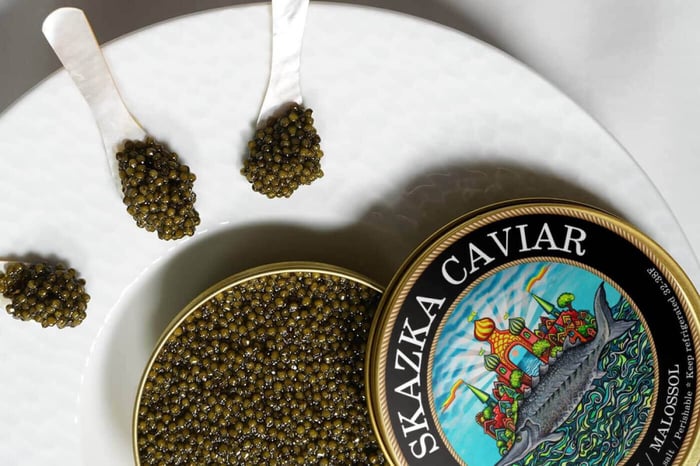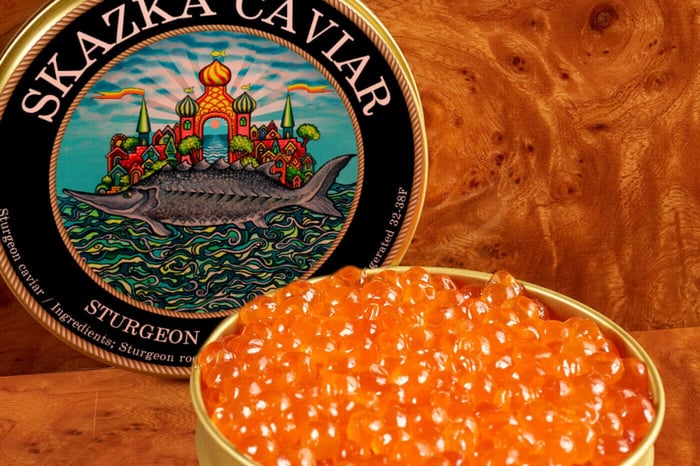 Caviar, long regarded as a delicacy associated with luxury and opulence, has a deep-rooted history that extends beyond European aristocracy. In the Middle East, this prized delicacy has evolved significantly, from its early trade days along the Caspian coast to its integration into regional culinary traditions. The transformation of caviar within Middle Eastern cuisine reveals not only changing tastes but also a broader narrative of cultural exchange, economic shifts, and culinary innovation. As global interest in Middle Eastern gastronomy grows, understanding caviar’s evolving role sheds light on how the region blends heritage with contemporary trends.
Caviar, long regarded as a delicacy associated with luxury and opulence, has a deep-rooted history that extends beyond European aristocracy. In the Middle East, this prized delicacy has evolved significantly, from its early trade days along the Caspian coast to its integration into regional culinary traditions. The transformation of caviar within Middle Eastern cuisine reveals not only changing tastes but also a broader narrative of cultural exchange, economic shifts, and culinary innovation. As global interest in Middle Eastern gastronomy grows, understanding caviar’s evolving role sheds light on how the region blends heritage with contemporary trends.
Ancient Origins and Trade Routes
The story of caviar in the Middle East begins with the ancient civilizations bordering the Caspian Sea, particularly Persia (modern-day Iran), where sturgeon were harvested for their roe as early as 2500 BCE. Caviar was originally consumed for its health benefits, revered for its nutritional richness and believed to possess medicinal properties. Persian traders introduced caviar to nearby regions, spreading it across the Silk Road. This early trade not only established the region as a key caviar supplier but also embedded the delicacy into royal and noble diets throughout the Middle East. As a result, caviar became synonymous with status, hospitality, and regional identity.

Read: A Guide to Caviar Grading: From Quality to Texture
Religious and Cultural Interpretations
Caviar’s presence in Middle Eastern cuisine has always been influenced by religious and cultural considerations. In Islamic dietary law, fish and their byproducts are generally considered halal, including sturgeon roe, although interpretations vary between Sunni and Shia jurisprudence. In predominantly Shia countries like Iran, caviar consumption was more widely accepted, allowing it to flourish as part of elite and even everyday cuisine. Meanwhile, in Sunni-majority nations, the legal debate around sturgeon being a scaleless fish created hesitation, affecting its widespread integration. Despite this, cultural appreciation for caviar remained strong, and in many households, it symbolized a blend of tradition and indulgence.
Persian Influence on Regional Palates
Iran has long stood as a cultural and culinary epicenter of caviar in the Middle East. Known for its premium-grade Beluga, Osetra, and Sevruga caviar, the Persian influence spread through both diplomatic exchange and regional cuisine. Iranian dishes incorporating caviar, often served simply with bread, butter, or herbs, set the tone for minimalist yet luxurious preparation styles that resonated across borders. As Persian dynasties engaged with neighboring Arab and Central Asian regions, caviar’s flavor and prestige were adopted and adapted, influencing how it was perceived not just as a food item but as a symbol of refinement and heritage.

Read: Wild and Farmed Caviar: Which is Better?
Caviar in Modern Middle Eastern Fine Dining
In recent decades, Middle Eastern fine dining has undergone a renaissance, with chefs reimagining traditional ingredients through a modern lens—and caviar has found a starring role in this transformation. From upscale Dubai restaurants to Beirut’s chic eateries, caviar is now infused into dishes like saffron risotto, lamb tartare, or even classic hummus, elevating them to gourmet status. This modern presentation reflects a fusion of global culinary techniques with local flavors, using caviar not only for taste but also for visual and textural contrast. The result is a new wave of Middle Eastern cuisine that balances innovation with deep cultural roots.

Sustainability and Local Production Trends
The growing global demand for caviar has sparked conversations about sustainability and ethical sourcing, particularly within the Middle East. Iran remains a top producer, but other countries like the United Arab Emirates and Saudi Arabia are now investing in aquaculture farms to produce sturgeon roe locally. These farms not only reduce reliance on wild sturgeon populations but also promote regional pride in self-sustained delicacy production. As local production increases, so does the accessibility of caviar to a broader audience, shifting its image from an unattainable luxury to a more mainstream yet still revered ingredient.
Caviar as a Symbol of Cultural Diplomacy
Beyond gastronomy, caviar has become a subtle tool of cultural diplomacy in the Middle East. Gifting caviar is common among political figures, business elites, and during high-profile events, symbolizing respect, generosity, and cross-cultural connection. Countries like Iran have long used caviar in diplomatic settings to convey wealth and sophistication while reinforcing ties with international partners. In today’s globalized Middle East, where culinary tourism and hospitality are booming, caviar continues to represent more than flavor—it embodies tradition, prosperity, and a bridge between East and West.
Conclusion
The cultural evolution of caviar in Middle Eastern cuisine is a compelling reflection of the region’s dynamic relationship with food, history, and identity. From its ancient Persian roots to its current status in gourmet dining and diplomacy, caviar has journeyed through layers of tradition, religion, innovation, and globalization. As the Middle East continues to balance its rich culinary heritage with modern influences, caviar stands as a flavorful emblem of both continuity and change. In doing so, it reaffirms the region’s role not just as a historical producer but also as a creative and cultural force in the global culinary landscape.
About the Author
 Igor Fishbeyn - Caviar Purveyor
Igor Fishbeyn - Caviar Purveyor
Igor Fishbeyn is purveyor of fine sturgeon caviar and creator of the Skazka Caviar brand. He is an expert with decades of experience specializing in importing, wholesaling, and retailing the finest quality caviar in the world. Igor frequently writes about caviar news and various topics about the caviar industry. He lives in San Francisco with his wife and daughter.
Shop Skazka Caviar
Browse Our Exclusive Caviar Collection
“River Beluga” Kaluga Sturgeon Caviar
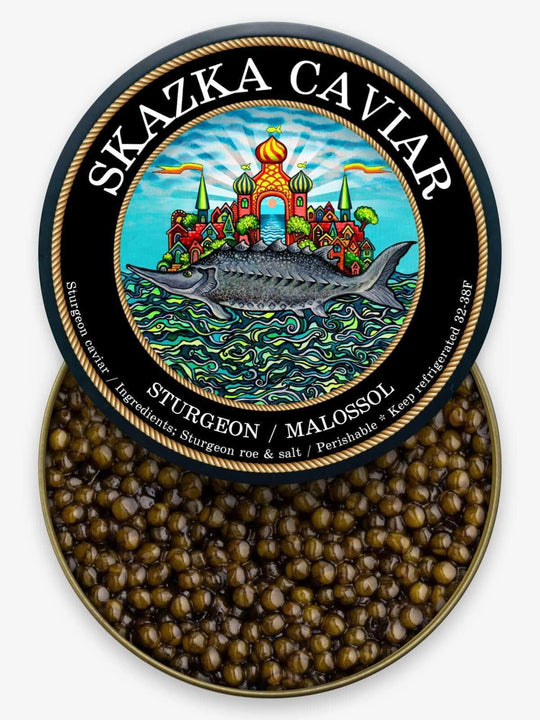
$295
$395
This large, robust caviar is a favorite of connoisseurs. Its firmness provides a satisfying texture that will keep you coming back for seconds and even thirds. Its luxurious chocolate brown color is perfectly evocative of its rich taste. Hints of… read more
“Oprah’s Favorite” Russian Osetra Caviar

$295
$335
This medium-sized caviar is sure to be the star of any party or function you may throw. Its deep chocolate brown color is indicative of its rich and buttery flavor. Amber Osetra caviar has one of the cleanest tastes of any… read more
"Russian Czar" Beluga Sturgeon Caviar
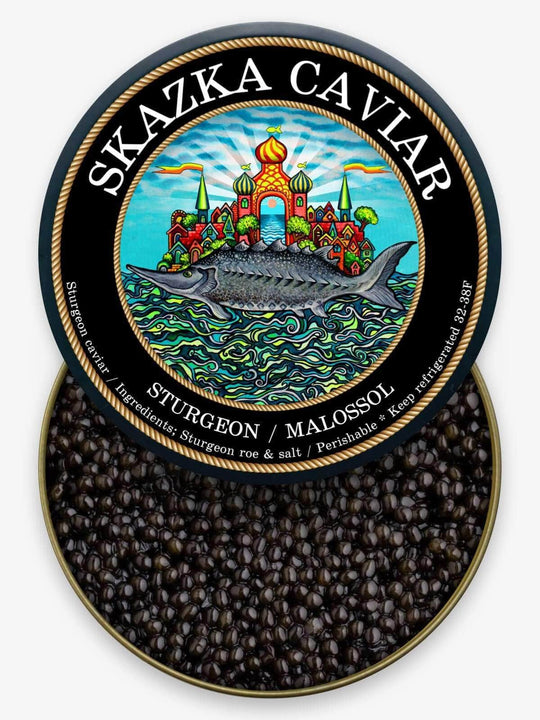
$495
$599
With an incomparable richness, “Russian Czar” Beluga Sturgeon Caviar is a knockout when it comes to fine caviar. Traditionally harvested in Russia, this caviar holds a tradition of greatness throughout history. With buttery notes that linger on the taste buds,… read more
“Tsar Reserve” Golden Osetra Caviar
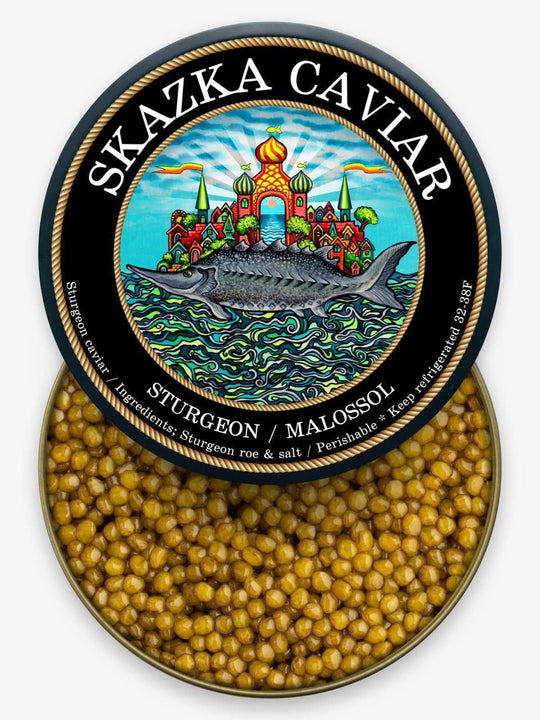
$395
Anyone with a taste for fine caviar will love “Royal Reserve” Golden Osetra Caviar. Its beautiful deep amber color is the first sign you’ll have that you’re in for something special, and once it hits your tongue you’ll know just… read more
Shop Caviar By Type
Shop Black Caviar | Shop Red Caviar | Shop Caviar Accessories
Shop Beluga Caviar | Shop Kaluga Caviar | Shop White Sturgeon Caviar
Shop Osetra Caviar | Shop Salmon Roe | Shop Albino Sturgeon Caviar


